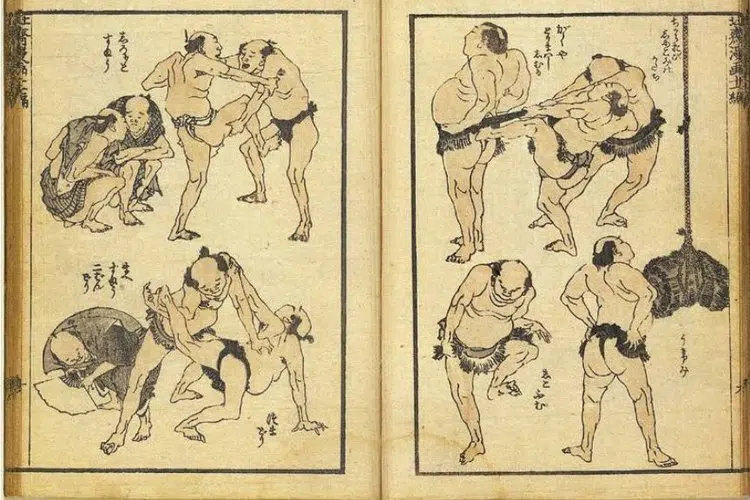Louis Torronde-C19 Tamar news
Hokusai is the most famous Japanese artist in the world! For centuries, he has influenced artists all over the world, from amateurs to professionals.
Tokitaro Katsushika is a legend in Japan, more than a legend, a myth. Tokitaro Katsushika was born in Edo, the ancient city of Tokyo, on October 31, 1760. He was adopted at a very young age by his uncle, a mirror maker, where he quickly developed skills in art, especially drawing, and when he was 18 he joined the workshop of the master Katsugawa Shunsho, famous for his Ukiyo-e prints.
This term meaning “image of the floating world” is a Japanese artistic movement of the Edo period. While an era of peace endures in Japan, an artistic change is born and the Ukiyo emerges. Artists were no longer solely aristocratic but could also express themselves through less expensive papers. Moreover, the themes of these prints are totally new: beautiful women, courtesans (Oiran), erotic scenes (Shunga), Kabuki theater, sumo wrestlers, fantastic creatures (Yokai), scenes in nature, famous scenes.

Must be admitted that this style is not very fashionable in Japan and is exceptionally successful in the West. It is called Japonism. Indeed, while in the land of the rising sun this movement appears to be vulgar because it deals with popular subjects and is printed on inexpensive media, it is adored in Europe at the end of the 19th century.
Precisely at the time when Japan was forced to open its commercial borders to the rest of the world. Let’s go back to Hokusai who continued to progress at a time when this art was booming in Japan. He worked with his master on the themes of Ukiyo. He began with portraits of women in sensual poses. When his master died, he went to several schools and in 1798 he created his own school where he developed his style with moralizing works. In 1812, he started to travel and to visit Japan. To reinforce the power of his message, he composed a succession of images that tell stories.
This work is called the Mangua. It is a collection of 15 volumes of prints, in the format of a notebook, which can be considered the beginning of manga. The publication of this series lasted 22 years, until 1834. We feel the author’s touch. He is marginal by his way of detailing the faces, finding the right pencil strokes so that we perceive the expressions. Dimples and wrinkles to express sadness, anger, boredom or joy. It was at this time that he used the pseudonym Hokusai for the first time, which means “North Star”. He used others such as Sôri, Hokusaï-Sori, Taïto, Litsu, Tametshi, Manrodjin, Katsushikaouo… He also liked to call himself “Gakyôjin” (drawing fool)..

In 1831, at the age of 71, Hokusai was at the peak of his art and published the 36 views of Mount Fuji. One discovers there magnificent scenes which emphasize the beauty of the Man making only one with the nature of a sometimes hostile Japan. Because despite the storms, the Tsunami, the earthquakes, the Japanese people resist. He painted farmers, fishermen, vagabonds and inhabitants, and in fact, Hokusai describes a Japan sublimated by its heritage where Man is at the heart of history. At the center of the 36 frescoes, the pride of the Nipponese, the mountain that can be seen on each print, not always in the foreground…
He succeeds in immortalizing a moment where the wave is gigantic while Mount Fuji and sailors bend to this force of nature, helpless. Personally I like very much this idea that nature and life are always at the center of his intentions. He is my “photographer” of that time. It is also worth noting that during these works, Hokusaï used Prussian blue, a new synthetic color at the time. It is said that he inspired Van Gogh and Gauguin.
His chromatic approach to the scenes would have confirmed the two impressionists in his correct use.Hokusaï still travels but always returns to Edo, he lives a few peaceful years during which he strives to make a drawing per day. In addition, he started another series of Mount Fuji and poems.
Unfortunately, his work was not completed and part of his studio was destroyed by fire. Gakyôjin died at the age of 89 in 1849 leaving behind no less than 30,000 prints. He devoted his whole life to become a better draftsman. Many other painters existed at the same time, but Hokusaï was unique, because of his madness of drawing and his philosophy of life, like a Ronin in search of the perfect print.



Comment here